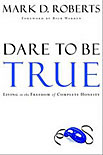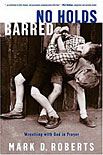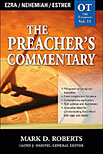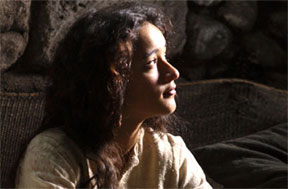| |
A Resource by Mark D. Roberts |
|
The Nativity Story and the Real Mary
by Rev. Dr. Mark D. Roberts
Copyright © 2006 by Mark D. Roberts
Note: You may download this resource at no cost, for personal use or for use in a Christian ministry, as long as you are not publishing it for sale. All I ask is that you give credit where credit is due. For all other uses, please contact me at mark@markdroberts.com . Thank you.
The Real Mary in Two Genres 
Part 3 of the series: The Nativity Story and the Real Mary 
Posted for Thursday, November 30, 2006
Tomorrow The Nativity Story will be released in theaters. This film offers a compelling artistic rendering of the story of the birth of Jesus as it's found in the New Testament.

When I saw an advance screening of The Nativity Story, I was struck by its portrayal of Mary. She is not the "glow-in-the-dark" figurine of popular Christian iconography. Nor is she the other-worldly saint of Christian tradition. Rather, Mary is a down-to-earth Jewish girl whose life is forever altered by a miracle of God.
I've spent hours upon hours studying the biblical portrayal of Mary. The portrayal of Mary in The Nativity Story reflects an historically and exegetically defensible understanding of her life. For example, most scholars believe that she was quite young, probably somewhere around fourteen years old when the angel visited her. This calculation reflects both the way she is described in the Bible and an understanding of Jewish culture in the first-century A.D.
| The portrayal of Mary in The Nativity Story was sufficiently sound from an historical point of view to allow me to relax my overactive mind and let Mary's story touch my heart. I was able to see, as never before, just how unsettling Mary's experience must have been. It's one thing to say that her pregnancy would have been scandalous, and quite another to let a work of art help one to feel the whip of disgrace as it cracked upon Mary's young back. Before viewing The Nativity Story, for example, I had never thought about what it must have been like for her to tell her family that she was pregnant, and that she hadn't been sexually intimate with a man. |
|
| |
Keisha Castle-Hughes as Mary |
Thus seeing The Nativity Story helped me to feel for Mary, to get inside her sandals, and to understand just how overwhelming the events associated with Jesus's birth must have been for her. I came away from the film with more respect for her courage and faith. I was also reminded how much God's ways are not our ways.
If The Nativity Story helps us to get in touch with Mary in a new way, so does Scot McKnight's recently-published book, The Real Mary: Why Evangelical Christians Can Embrace the Mother of Jesus. Ironically, or perhaps providentially, this book does with words what The Nativity Story does with film. As an outstanding New Testament scholar who can write for non-specialists, McKnight helps us understand Mary in her historical context. He explains in some detail, for example, what would usually have happened to an engaged girl who became pregnant before she was intimate with her husband. It isn't a pretty picture. But it's a picture against which we can see Mary more clearly, and revere her more freely.
The Real Mary doesn't deal only with the events surrounding the birth of Jesus. McKnight focuses mainly on biblical descriptions of her life, though adding some insights on what came later. Though he is an evangelical Christian, McKnight doesn't go the "Catholic bashing" route. He does, however, show clearly what can be learned from Scripture and what cannot.

Though The Real Mary is a work of popular scholarship, I found myself deeply moved in places. McKnight's portrayal of Mary's gutsy faith caused me not only to admire her, but also to consider my own paltry trust in God. Though not what you'd call an "inspirational" Christian book in the narrow sense, since The Real Mary is mostly filled with wise teaching, I have been truly inspired by reading this book.
As we enter the season of Advent, a time in which we get ready for a fuller, richer celebration of Christmas, I can think of no better way to embrace this season than by getting to know the real Mary in two genres. Don't miss The Nativity Story. And be sure to read The Real Mary by Scot McKnight. Both of these portrayals of Mary will help you get ready to welcome the real Jesus in a new and fresh way.
Mary and the Pain of Serving God 
Part 4 of the series: The Nativity Story and the Real Mary 
Posted for Friday, December 1, 2006
| The Nativity Story is in theatres today. Go see it! I'm taking my family tonight. |
When we think of Mary's experience as the mother of Jesus, our first thought is of what an incredible honor and blessing it was for her. Mary is, quite arguably, the most blessed of all human beings because she was chosen by God to carry, give birth to, and raise His Son. I can't imagine a more honored and special and wonderful calling for any human being. Indeed, Elizabeth spoke the truth when she cried, "Blessed are you among women!" I'd want to add, "and among men too!"

But I think it's easy for us to miss the pain inherent in Mary's service to God. To be sure, I'm thinking in part of the pain of childbirth. Though I've never experienced this directly, I have pretty close secondhand experience, and that's more than enough to convince me that giving birth must be one of the most painful of all human experiences. The baby Jesus could have shown up in a basket on Mary's doorstep for her to raise. That would have been an easier start for Mary (putting aside the theological issues for a moment).
Yet I'm thinking of other dimensions of the pain associated with Mary's unique role as mother to the Son of God. These dimensions are poignantly dramatized in The Nativity Story and clearly explained in Scot McKnight's book, The Real Mary. I'm thinking about the most obvious downside of the virginal conception, the fact that to most people Mary's pregnancy would appear to be a result of her sexual immorality.
Now in our day, there still are communities that frown upon a woman's getting pregnant outside of marriage, though this practice is increasingly common in our society. In Mary's day, however, getting pregnant apart from marriage, and especially the sexual sin it implied, was just about the worst thing a woman could do. Mary's situation was complicated by the fact that she was engaged to Joseph. In her culture, this meant essentially that she was married, though she and Joseph would live apart for a year and were not allowed to enjoy sexual intimacy together until they shared a common home. As a legally married woman who became pregnant, and not be her fiancé/husband, Mary would have been thought to be an adulteress. The Jewish law is clear about what happens to such a woman: "If a man commits adultery with the wife of his neighbor, both the adulterer and the adulteress shall be put to death" (Leviticus 20:10). We see an example of this law being applied in John 8:1-11. |
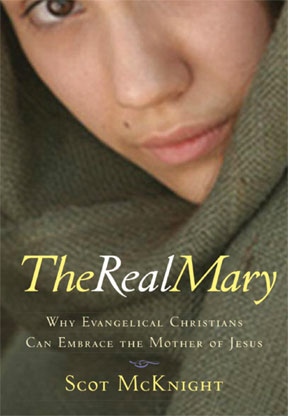
|
| |
|
For Mary, the angel's annunciation contained both wonderful and terrible news. On the positive side, she learned that her child would be the long-hoped-for king of Israel, the One who would sit upon the throne of David. It's hard to imagine better news for Mary. Yet, on the negative side, she learned that her pregnancy would come apart from her marriage. She was surely aware of the painful implications of this miracle. She would appear to be an adulteress. She would dishonor her family, perhaps even be disowned by them. She would dishonor her fiancé/husband, and in all likelihood be rejected by him. Moreover, if his anger or sense of righteousness demanded it, he could have her put to death according to the law.
In the best case scenario, Mary would not be stoned to death, but would live her whole life as a woman of questionable morality, somebody about whom people would whisper when she wasn't around, or even when she was. We find evidence of this very thing in Mark 6:3, where Jesus is referred to by the residents of Nazareth as "the son of Mary." Every son, other than one of illegitimate birth, would have been called the son of his father. The phrase "son of Mary" in Mark 6 was equivalent to calling Jesus a bastard, in the literal sense.

As we read Mary's story in Luke 1, especially when we realize the cultural downside of her virginal conception, we cannot help but to wonder at her faithful response to the angel: "Here am I, the servant of the Lord; let it be with me according to your word" (v. 38). Moreover, by the time she sings her magnificent song, which we call The Magnificat, Mary understands that "from now on all generations will call me blessed" (v. 48). To be sure, no human being apart from Jesus Himself has received more honor than Mary. But it's most unlikely that she enjoyed any of this adulation in her own life, at least not until after the resurrection of Jesus. What Mary actually experienced socially was closer to disgrace than grace.
Mary's situation has caused me to reflect upon the strange ways of God. She is perhaps the extreme case of something that has been experienced by millions and millions of God's people throughout history. Just think of it. God chooses the Jews as His special people, but their history hasn't exactly been free from suffering. Jesus chooses twelve to be his closest disciples, and most if not all of them end up being killed for this reason. Ditto the Apostle Paul. Ditto millions of Christian martyrs throughout the centuries.
But even if we're not actually killed for our faith, serving God is often fraught with pain. I recently spoke with a woman in my congregation who has an amazing ministry of writing about people who are experiencing great suffering. God has used her ministry to do amazing things for these people. But this has come at a high cost for her, because she's a person with a tender heart. She doesn't just write about the suffering of people; she weeps over them. God has given her a wonderful calling, yet it is wrapped in pain. God has used her to make a huge difference to help suffering people, and in this she rejoices. But she's also known more pain that most people because of her unique ministry.
I don't think it's an accident that Mary's calling involved pain. This seems to be a part of how God does things. Just think about Jesus, if you want an even more striking example. One of my favorite books is The Wounded Healer by Henri Nouwen. In this tender and wise book Nouwen explains that God works through us, not in spite of, but because of and in the midst of our woundedness. Pain opens our hearts to God, enabling to minister with passion, authenticity, and humility. Though God's call promises innumerable blessings, it also leads to pain and heartache. This isn't the fun part, but Mary's example suggests that it is an essential part of God's work.

Home
|





